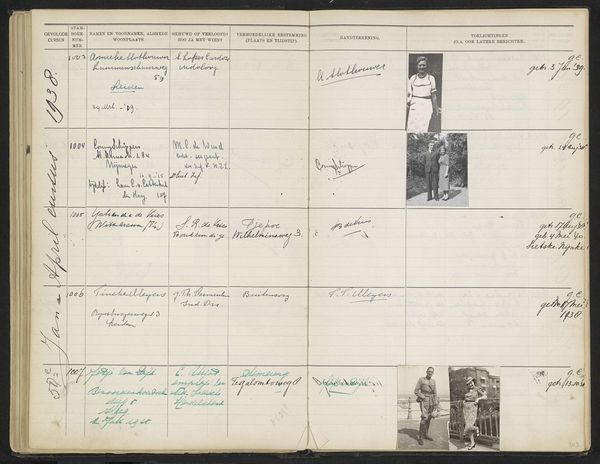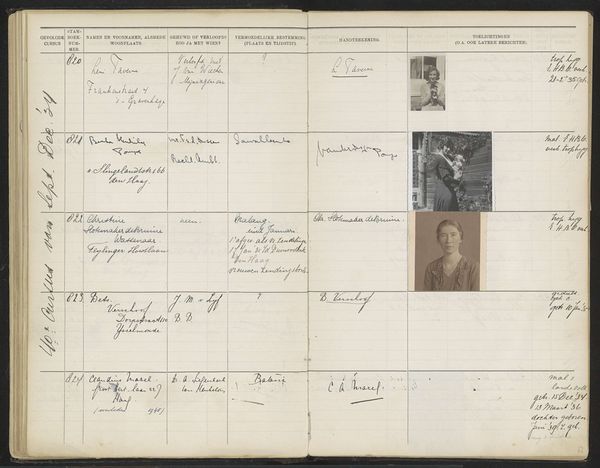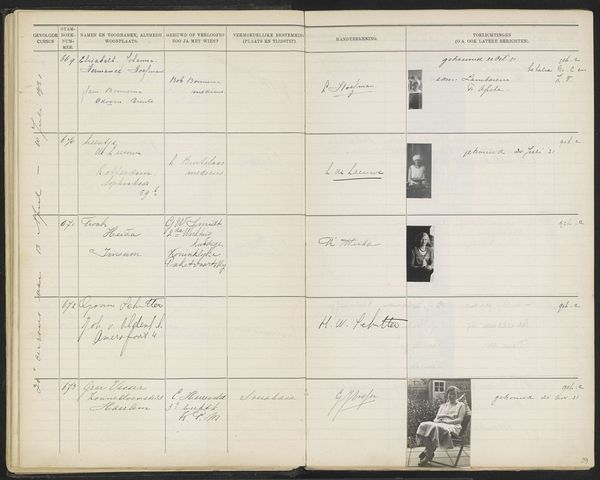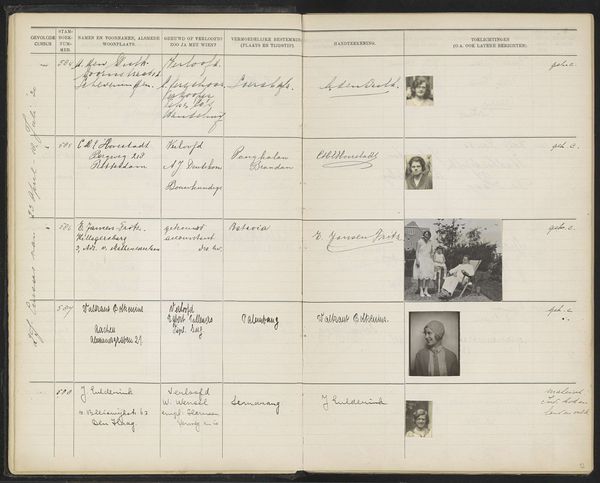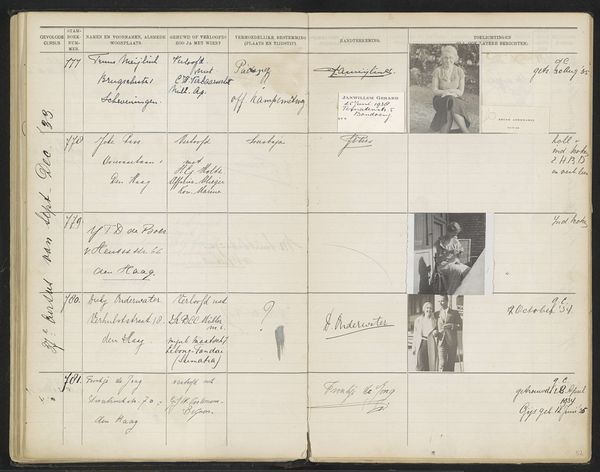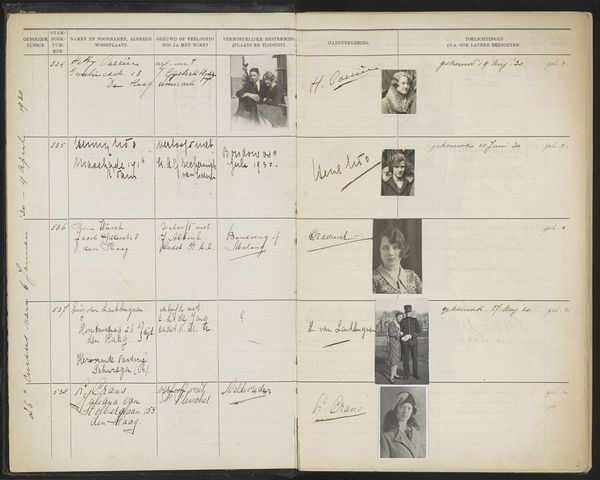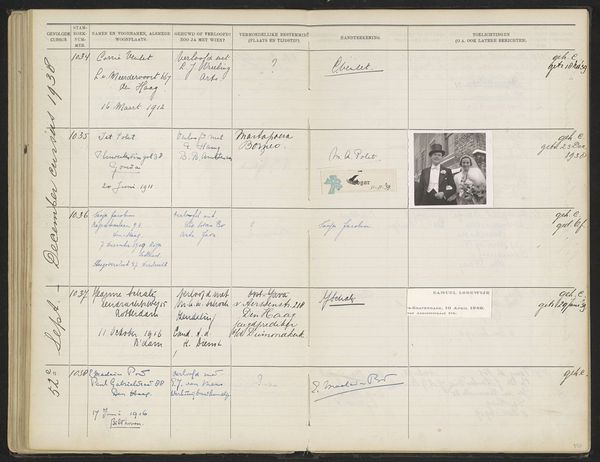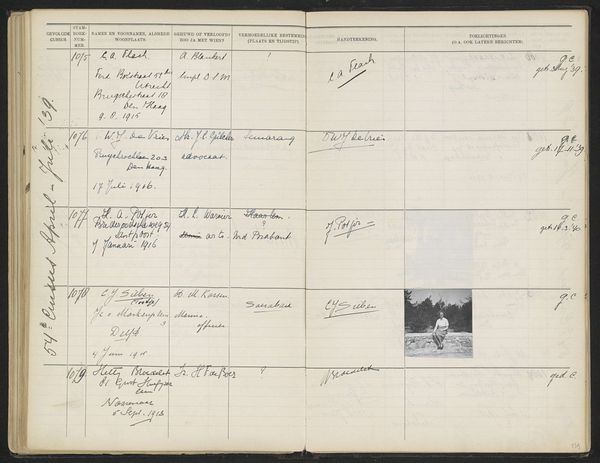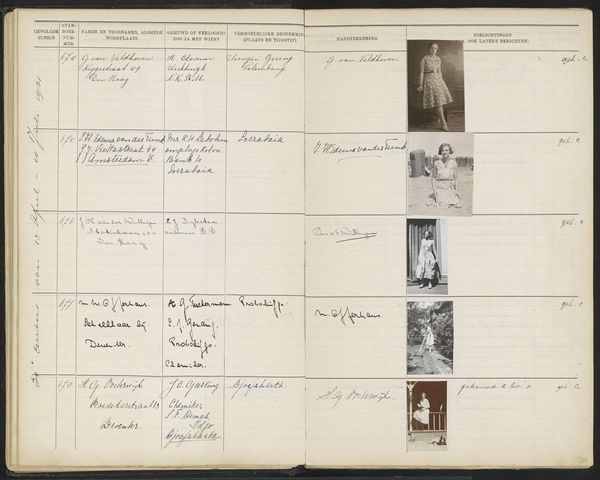
Blad 25 uit Stamboek van de leerlingen der Koloniale School voor Meisjes en Vrouwen te 's-Gravenhage deel II (1930-1949) Possibly 1931 - 1934
0:00
0:00
print, paper, photography
#
portrait
# print
#
paper
#
photography
Dimensions: height 337 mm, width 435 mm
Copyright: Rijks Museum: Open Domain
Curator: This document is page 25 from a register entitled “Stamboek van de leerlingen der Koloniale School voor Meisjes en Vrouwen te 's-Gravenhage deel II (1930-1949),” dating, most likely, from the early 1930s. It's a photographic print on paper. The handwritten records paired with mounted photographs of young women are striking. My initial sense is a strange blend of administrative formality and personal stories, something bureaucratic yet profoundly human. The rigid structure of the record book clashes with the individuality of each person captured in these images. Editor: Absolutely. This colonial school register offers a glimpse into a very particular social and historical context. The meticulous record-keeping, with its emphasis on names, places of origin, and reasons for absence, speaks to the systemic nature of colonial education for women. Think about the labour involved in compiling this, handwriting details for hundreds of individuals. It's not just a neutral record; it’s a produced artifact shaped by societal structures of control. Curator: I agree. Examining the material construction—the paper stock, the ink, even the binding of the ledger itself—reveals a commitment to permanence and documentation. Each entry becomes a testament to the young women and their roles. It's also compelling to consider the photographic process itself and the materiality of early photography. How are these images being constructed for public record? Editor: Yes, the construction of these identities is a key point. The school's focus on educating girls and women in colonial settings must be understood within a broader power dynamic. Who gets to be educated, and to what end? We can’t ignore the political implications embedded within this seemingly mundane school record. The inclusion of portrait photos adds to the constructed nature of their colonial experience. Curator: Exactly, but how were they displayed, handled? And what kind of information did the colonial powers intend to track? Even though they are now just archived, each student’s individual registration functions as a very interesting cultural object, speaking of access and its restrictions. Editor: The absences noted signify so much too: resistance, illness, displacement, socioeconomic pressures… So many unwritten stories exist within this colonial apparatus. How are individual and cultural experiences overwritten, dismissed, or misremembered over time? That has to be part of the picture here. Curator: Looking at it from a slightly different perspective now, what's powerful to me about this printed register is its ability to endure over time. It acts as a stark reminder of the complexities inherent in our histories. Editor: Precisely, a powerful document, which really provokes thought.
Comments
No comments
Be the first to comment and join the conversation on the ultimate creative platform.
